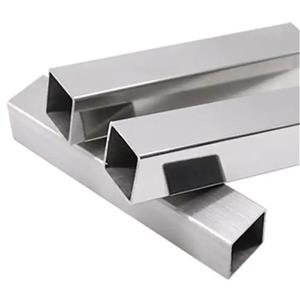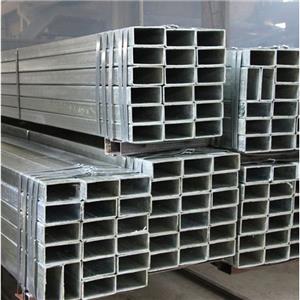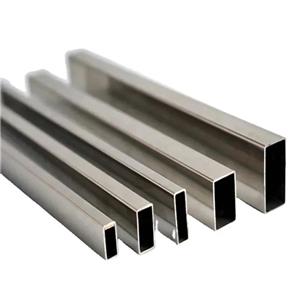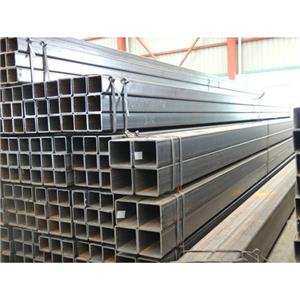- Home
- >
- News
- >
- Industry News
- >
- Supply restrictions on metals such as stainless steel may last until 2022
Supply restrictions on metals such as stainless steel may last until 2022
“There are several factors that may cause precious metals to continue to face supply constraints in 2022, the most important of which is demand. We have never seen such a strong demand before. Manufacturers also struggle to keep up with demand, partly because people work from home and order consumer durables online. "
Colin Hamilton, managing director of Commodity Research at Bank of Montreal Capital Markets, said in an online speech on October 12.
“This is a real, demand-driven deficit. "
He added.
Hamilton’s statement was issued during London Metal Exchange Week from October 11th to 15th. The event is an annual gathering of metal experts, including traders, analysts and CEOs, as well as an invitation dinner hosted by the London Metal Exchange.
01
Energy crisis affects metal supply
The global energy crisis also played a role in supply difficulties.
We are working hard to deliver more calories to the world. The reason behind the energy crisis is not so much due to the energy transition (which is still in its infancy), as it is due to the greatly increased heating of the space.
Hamilton pointed out.
However, buildings may help solve the problem of space heating, as they account for about 30% of global energy. There are some metal-intensive victories there. The smart metal facade of the building will allow for better temperature control. At the same time, improving ventilation based on the new coronavirus will benefit zinc and copper. In addition, LED lighting is wiring-intensive. Data volume, cloud IT spending and 5G have also proven to be energy intensive.
All these factors are driving the structural growth of energy demand, and we may not be ready yet. "
Hamilton said.
02
China's limited power and production
Power outages in China are also affecting industrial activities. After an informal ban in 2020, the country has now resumed coal shipments from Australia.
Power outages in China are very common. The electricity supply we are cutting exceeds the demand. "
Hamilton added.
According to China Customs statistics, coal imports in September increased 76% year-on-year to 32.9 million metric tons. Natural gas imports increased from 8.61 million tons to 10.6 million tons, an increase of 23%. Therefore, Hamilton predicts that metal supply will decline for the rest of 2021.
The European News Agency reported last week that after the outbreak of the new crown epidemic, China's economy has restarted, and the 2020/2021 winter will be longer. Coupled with competition from East Asian companies, European natural gas prices have also seen several year-on-year increases.
From October 16th to 17th, the European Energy Exchange's weekend price of natural gas at the Amsterdam TTF Center was 89.31 Euros (103.59 USD) per MWh. This level is a far cry from the previous day's price of 114.29 euros ($132.57) announced on October 6. At the same time, this is more than double the 50.38 euros ($58.43) reported on September 1.
03
Logistics reorganization
Hamilton pointed out that the distorted ways in which economies have also recovered from the new crown epidemic, ranging from geographic factors to sectoral factors, have also caused serious damage to logistics.
Restrictions related to the pandemic have led to long queues of ships in ports such as Los Angeles. In addition, containers are scattered all over the world.
Hamilton said that in some cases, raw metal is transported in bulk rather than in containers.
Hamilton warned that the possibility that people urgently need metal is also quite high, which means a potentially high premium.
If you can, you will want to hold more inventory just to recognize the fact that it is sometimes difficult to obtain these materials in time. "
Hamilton warned.
In the outlook for precious metals, Hamilton believes that China's energy shortage and high costs will mean that the supply of aluminum will continue to be reduced by 2 to 3 million tons until the end of the year, until the energy market has greater negotiation flexibility.
Aluminum demand in the first half of 021 also increased by 120% year-on-year. In the short term, the current market is very tight. But in the long run, this is an industry where we see scraps pass faster because of its shorter life cycle requirements. "
Hamilton said.
Outside of China, mainly in the United States and Brazil, idle production capacity needs to be upgraded before it can be put into use.
04
The outlook for copper
For copper, the supply of raw materials has begun to ease.
Copper processing fees may be slightly higher in 2022. There may be shortages by 2030, and it is pointed out that there is still a substantial increase in demand. This growth will come from the energy transition and world electrification, as well as construction and consumer goods. The market needs to accept substitution. "
Hamilton said,
Optical fiber will take away part of the demand, but the energy transition, world electrification, infrastructure construction and the proliferation of consumer goods will jointly increase demand.
The copper project is underway, and it is expected that nine copper projects will be launched by 2030. However, Hamilton believes that four of them are more realistic.
05
Rising zinc demand
In terms of zinc, China's demand in the first nine months of 2021 is higher than that of copper, aluminum or steel. We have not seen any growth in the previous three years.
European galvanized steel imports are undoubtedly a key factor and will reach a record level in 2021. "
Hamilton added.
He added that demand growth will slow in 2022, although 2021 is a good year.
He warned that expectations of China's demand and supply are too high and need to be reduced. Environmental issues also make it more difficult to start new zinc projects and smelters.
Hamilton said that European zinc smelters are also vulnerable to rising electricity costs.
06
Lead demand is flat
However, Hamilton warned that lead demand will continue to flatten out over time.
Lead faces many challenges, especially lithium-ion batteries. In addition, recyclability is also the Achilles heel of this metal, so we don't need too many raw materials. "
Hamilton said.
07
Strong demand for nickel
Hamilton said that due to the very high demand for stainless steel, global nickel demand may increase by 15% year-on-year in 2021.
The production cost of nickel pig iron is at the highest level since 2014 because of the increase in energy costs and logistics costs for ore transportation. "
Hamilton said.
Although the People's Bank of China said it will no longer provide funding for any coal-burning nickel plants, the battery and stainless steel industries still keep Hamilton optimistic about the prospects of this precious metal.
Battery recycling will continue to grow in the next decade. This will also be a source of nickel supply units"
He pointed out.






